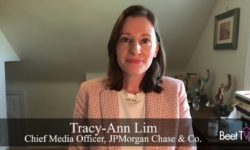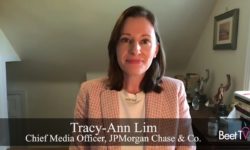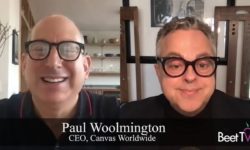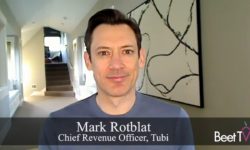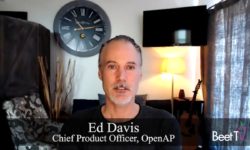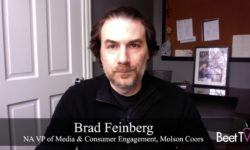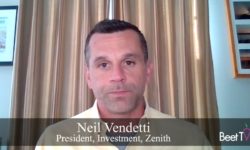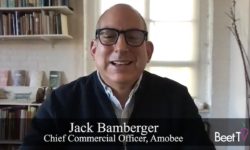This year’s upfront sales season will be notable for the heightened interest in digital video platforms whose audiences grew as consumers spent more time at home during pandemic lockdowns.
“There’s going to be a tipping point,” Dani Benowitz, president of U.S. at Magna Global, the media agency owned by Interpublic Group, said in this interview with Beet.TV. “We are going to see more dollars follow eyeballs. With linear ratings being down what they are, we’re going to see a diversification within video spend — more money going to streaming/digital.”
Some of Magna’s clients will still spend heavily on traditional linear television, given the lift in awareness and sales gains they experience after commercials air, Benowitz said. But she still expects spending on digital video to eventually match the size of the shift in media consumption.
“The upfront is still an important part of the video mix, because there are benefits that come with the upfront — pricing, availability of programming, the flexibility that comes with an upfront,” she said. “We’re a big proponent of the calendar year — we have clients that work in both marketplaces — but the supply-and-demand aspect to the upfront will always still a part of how we do business.”
Advertisers are demanding greater flexibility in their media buying, including calls for a calendar year upfront that matches the timing of their yearly budget planning. The Association of National Advertisers last year published two white papers that outlined proposals to improve the media ecosystem, including the upfront marketplace.
“The ratings erosion is making it harder to do business in the scatter marketplace, but unfortunately, upfront timing will still be what it has been,” Benowitz said. “You’ll see people come back to the upfront as the world is opening up and budgets are becoming more sound — so the upfront will be a big part of people’s mix.”
Connected TV, Audience Identifiers
Connected TV (CTV) usage has grown as households cancel cable and satellite TV service and hook up their TVs directly to the internet. That ensuing shift in viewing habits means that advertisers are using a combination of direct and programmatic buys to reach high-value audiences (HVAs) through digital streaming services.
“We are working on solutions to break down the traditional budget allocation. We are looking at allocations in a quarterly view, and still trying to build in reach guarantees. We’re also leveraging the support of third-party tech to help layer in HVA syndication to help ensure our clients can reach their intended target,” Benowitz said. “Eventually, this should help speed up the optimization process, allowing for our audience guarantees to be met.”
Magna also is working with IPG’s Kinesso, which specializes in data-driven marketing solutions, to develop an audience identifier that pulls in data from various sources including advertisers, media partners and Axciom Marketing Services. Interpublic bought the marketing services unit of Axciom in 2018.
“This ID will help us build HVAs and activate — and then marry everything back and finally report back on full campaign insights and measurement,” Benowitz said.
IPG Mediabrands this month announced a partnership with TikTok, the social video app that’s popular with Generation Z and younger millennials, on a program to bring together brands and content creators for influencer campaigns.
“It’s about content, and linking creators to our clients so we will be successful on the platform,” Benowitz said. “The thing I really love about TikTok is the ability to organically talk to an audience that’s getting harder and harder to reach.”
You are watching “Optimizing a Rapidly Converging TV & Video Marketplace: What’s Next,” a Beet.TV leadership series presented by Amobee. For more videos, please visit this page.






